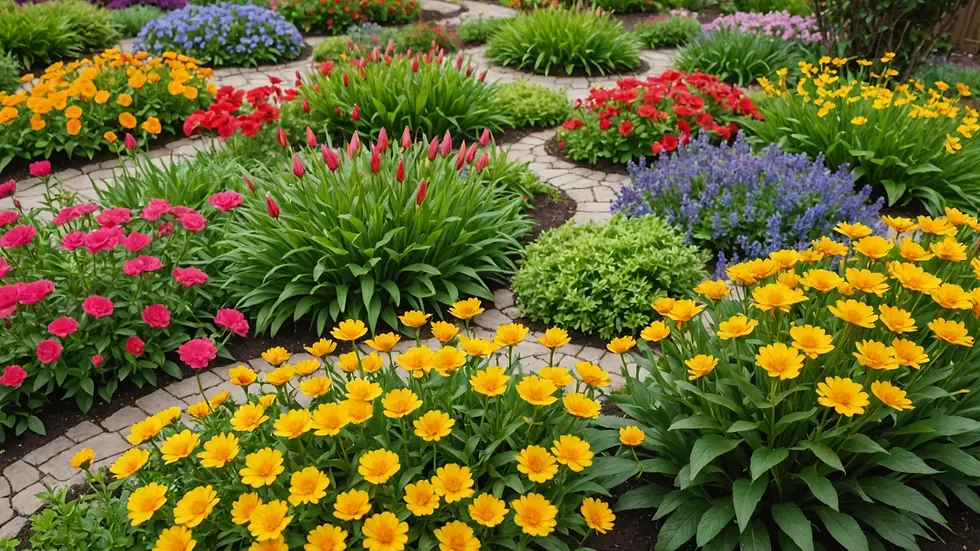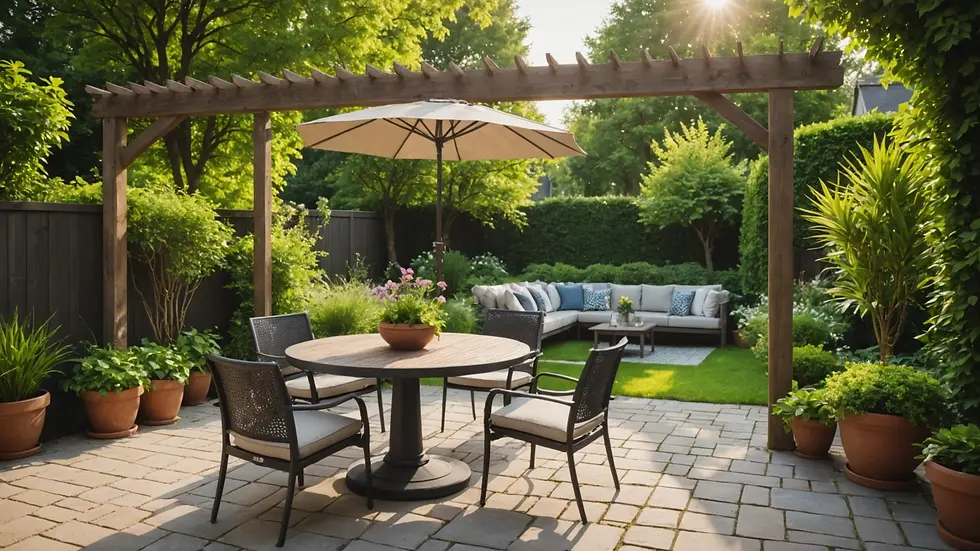How to Design a Low-Maintenance Garden for Busy Homeowners in Chatham: A Comprehensive Guide
- i29073

- Dec 11, 2024
- 4 min read
Creating a beautiful garden shouldn’t mean sacrificing your valuable time. Busy homeowners in Chatham often find the thought of garden upkeep overwhelming. However, you can enjoy the beauty of a garden without the stress of constant maintenance. This guide will show you how to design a low-maintenance garden that fits seamlessly into your active lifestyle, allowing you more time to appreciate your outdoor space.
Understanding Low-Maintenance Gardening
At its core, low-maintenance gardening means creating a landscape that requires minimal care. By focusing on plants that thrive in Chatham's climate, you will reduce watering, pruning, and fertilizing needs.
Typically, low-maintenance gardening revolves around three main principles:
Selecting the right plants
Implementing hardscaping
Using efficient irrigation methods
When these principles are applied effectively, they can dramatically reduce the time you spend maintaining your garden.
Choosing the Right Plants
Native and Drought-Tolerant Species
Selecting the right plants is crucial for a low-maintenance garden. Native plants, such as black-eyed Susans and New England asters, are adapted to local conditions and require less attention. For example, native grasses can survive on 30% less water than traditional, non-native varieties.
Drought-tolerant plants, such as succulents, ornamental sage, and echinacea, flourish even in dry conditions, ensuring you have vibrant blooms without constant watering. By incorporating these plants, you reduce both maintenance and water usage.

Perennials Over Annuals
Opting for perennials instead of annuals is another smart strategy. Perennials like daylilies and sedges come back every year, eliminating the hassle of replanting. Research shows that perennials require 50% less care as they mature compared to annuals, which need constant replanting and care.
Implementing Hardscaping Elements
Pathways and Patios
Hardscaping, which includes pathways and patios, plays a significant role in reducing maintenance. For instance, installing a gravel path can decrease weeding tasks by up to 60%. A well-placed patio can create a relaxing outdoor area for dining or lounging, further minimizing the garden space that requires upkeep.

Mulching
Adding mulch around your plants does wonders for reducing maintenance. A layer of organic mulch can improve soil health and retains moisture, reducing the need for frequent watering by 30%. It also suppresses weeds, saving you time spent uprooting unwanted growth.
Efficient Irrigation Methods
Drip Irrigation Systems
Installing a drip irrigation system can be one of the best decisions you make for your low-maintenance garden. These systems deliver water directly to the plant roots, using about 30-50% less water compared to traditional systems. Timers can be set to automate watering schedules, letting you attend to your other responsibilities without worry.
Rain Barrels
Collecting rainwater is not only sustainable but smart. Rain barrels can retain enough water to supply your garden during dry spells, often enough to reduce your dependence on municipal water sources significantly. In fact, one rain barrel can capture around 55 gallons of water, which can last a small garden several days without additional watering.
Designing for Seasonal Interest
With the right design approach, your low-maintenance garden can have year-round appeal. Mixing evergreen plants, flowering perennials, and unique focal points keeps your garden vibrant through all four seasons.
Evergreen Plants
Including evergreens ensures that your garden remains lively in winter. Common choices like boxwoods or holly provide structure and color even when other plants have faded.
Seasonal Blooms
Choosing plants that bloom at various times helps maintain visual interest. For example, daffodils bloom in the spring, while geraniums provide color in summer and asters take the stage in fall. This planning can keep your garden looking fresh and beautiful all year round.
Creating Zones
To maximize functionality, divide your garden into distinct zones. You might designate an area for relaxing, one for dining, and another for kids to play. This organization helps you manage your space and maintain each section efficiently, such as grouping plants with similar watering needs together.
Involving Non-Plant Elements
Adding non-plant features can enhance your garden's aesthetic while cutting down on maintenance. Decorative stones, sculptures, or outdoor art can provide visual interest without the upkeep of living plants.
Adding Furniture
Strategically placing outdoor furniture allows for gathering and relaxation. Select areas that provide pleasing views of your plants or garden features. This setup encourages you to enjoy the space without constant effort to keep it looking good.
Sustainable Practices
Sustainability enhances the efficiency of low-maintenance gardens. By choosing eco-friendly options, you create a garden that is as kind to the environment as it is easy to manage.
Composting
Setting up a compost system can turn kitchen scraps and yard waste into valuable nutrition for your garden. Compost enriches your soil while reducing the need for chemical fertilizers, saving you money and effort.
Integrated Pest Management (IPM)
Implementing Integrated Pest Management helps control pests naturally. This method encourages beneficial insects, like ladybugs, to handle pest problems, eliminating the need for harmful chemical treatments.
Final Thoughts
Designing a low-maintenance garden can be a fulfilling project for busy homeowners in Chatham. By selecting the right plants, utilizing hardscaping techniques, and employing efficient irrigation, you can create a beautiful landscape that requires minimal upkeep.
Incorporating seasonal interest and creating functional zones will enhance the overall appeal of your garden. With these strategies, you will enjoy a flourishing garden that complements your busy life while allowing you to relax and recharge in your outdoor retreat. Embrace gardening in a way that saves you time and energy without sacrificing beauty.






Comments